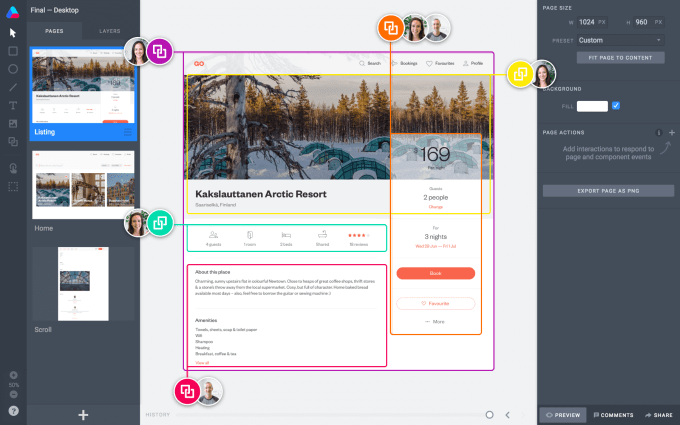
Religion is big business. In fact, a recent report suggests that the faith based economy brings in about $1.2 trillion a year. An industry this large, of course, has plenty of room for growth. Here are some business ideas for entrepreneurs seeking to get into the faith based economy.
Faith Based Business Ideas for Entrepreneurs
Religious Gift Shop Operator
You can open a store with little trinkets or gifts that are religious in nature, including decorative items, personalized Bibles or other written works.
Kosher or Halal Caterer
For those religions that have certain restrictions or guidelines in terms of food, you could start a specialty catering company that offers dishes with those specific guidelines in mind.
Kosher or Halal Food Stand Operator
Or if you are more interested in a smaller food operation, you could start a small food stand or truck that offers Kosher or Halal options.
Wedding Officiant
Weddings are often observed as religious events. So getting ordained or registered as a wedding officiant can afford you the opportunity to start a business performing wedding services.
Religious Dating Website Operator

If you’re looking to start a business that’s mostly based online, you can start a dating website aimed at helping people of a certain faith group find matches that share their values.
Author
There are plenty of opportunities out there for authors and writers to build businesses around their words. You can even build a business as an author that writes about religious topics.
Religious Blogger
Or you can blog about faith to share your writings with the world online.
Christian Bookstore Owner
Christian bookstores sell Bibles and other religious texts aimed at Christian consumers.
Meditation Coach
Buddhism, Hinduism and other religions practice meditation as a way of connecting with their spirituality. So you can help others of your faith practice meditation as a coach.
Seller of Meditation Items
There are also beads, incense and other supplies that you can use as part of a meditation practice. So if you make any of these items, you can build a business selling them to others who practice religious meditation.
Kosher or Halal Daycare Operator
For those who have Kosher or Halal diets, finding childcare that caters to them can be a challenge. So if you offer day care services that include food options aligning with these diets, you could attract a significant religious client base.
Religious Tutor
For those students who attend religious schools, you can offer tutoring services to help them learn about religious topics.
Bible Verse Sign Maker
There are plenty of different ways you can use art to showcase religion or spirituality. You can get creative with lettering and draw or paint Bible verses or other religious sayings onto canvas, wood or other surfaces and then sell them online or at craft shows.
Greeting Card Publisher
You can also showcase your design skills by creating greeting cards for things like holidays, weddings, baptisms and other faith based occasions.
Gospel Musician
If you’re more musically inclined, you can start a band or work as a solo artist playing gospel or religious inspired music.
Wedding Band Leader
You can also offer your services to couples getting married, either working at the ceremonies or receptions.
Holiday Décor Shop Owner

There are plenty of religious holidays throughout the year. So you can sell décor and other celebratory items related to those different holidays.
Holiday Food Shop Operator
You can also start a business intended to sell food items for holiday dinners or other special occasions.
Religious Publisher
If you want to spread the word about your faith or tell stories related to your religion, you could start a publication like a magazine or physical newsletter and sell or offer ad space.
Marriage Counselor
For people who want to work on their marriages in a faith based setting, you could offer relationship counseling services.
Online Newsletter Publisher
You could also start an online newsletter with information about your faith to circulate to a community online.
Religious Clothing Store Owner
You can set up a shop, either in your local community or online, where you sell clothing items with religious sayings or images on them.
Custom Embroiderer
Or you could offer to embroider personalized messages, including those with faith based messages on them, onto customers’ clothing or other personal items.
Wedding Dress Seller
Another wedding focused business you could start would be creating and selling wedding dresses, either traditional white gowns or those aimed at other types of religious ceremonies.
Wedding Dress Alterations Provider

You could also offer your services altering gowns for weddings.
Tuxedo Rental Service Operator
Tuxedos are also a big part of many people’s wedding day. So you could start a tuxedo rental service for grooms and groomsmen.
Specialty Florist
In addition, you can start a florist business to help people design beautiful floral arrangements for weddings, funerals and other occasions.
Wedding Planner
You can also offer your services as a wedding planner to help people plan their religious services and other important details of their wedding days.
Religious Jewelry Store Owner
Jewelers and handmade artisans, you can start a jewelry business centered around pieces that have special religious meaning, ranging from cross necklaces to Buddhist beaded jewelry.
Family Friendly Video Game Creator
There are a lot of video games out there, but not many that offer family friendly themes and faith based messages.
Family Friendly Movie Creator
Likewise, you can build a business by producing family friendly movies or videos that offer faith based messages or lessons for kids and families.
Children’s Book Author
There are also plenty of opportunities for you to create children’s books with religious themes and lessons.
Religious Illustrator
You could also offer services as an illustrator to depict images in children’s books or in other religious materials.
Handmade Seller
There are plenty of other opportunities for you to get creative and make handmade items with religious themes to sell online or at craft fairs.
Religious Influencer
You can also build an online business based around new media. Become an online influencer by posting about religious topics on social media or elsewhere. And then you can potentially work with other religious businesses or organizations to spread the word about various programs.
Religious Podcaster
Or you can get a little more specific and start a podcast aimed at talking about topics related to faith and religion.
Travel Agency Operator for Religious Groups
There are plenty of missions, youth groups and other religious groups that travel to other parts of the world together. So you can build a business as a travel agent that specializes in planning those trips.
Spiritual Artist
If you’re an artistically inclined entrepreneur, you can sell paintings inspired by religious stories or even teach art classes with a spiritual twist.
Religious Life Coach
For those who want to help others manage various aspects of life, you can offer life coaching services and emphasize faith as a strong part of your coaching program.
Cooking Class Instructor
If you enjoy cooking and want to teach others about it, you can offer cooking classes in your local area that focus on Kosher or Halal options.
Kosher or Halal Recipe Blogger
Or you can start a blog to create and post some Kosher or Halal recipes with an online audience.
Family Therapist
For those trained in counseling and therapy, you can offer counseling services to families or couples with a strong emphasis on faith and spirituality.
Religious Candle Maker
Candles are a big part of many religious services and traditions. So you can make and sell prayer candles or those meant to go in menorahs or other religious items.
Faith Based Thrift Store Operator
Thrift stores have become popular business models for faith based organizations. You can open a thrift store and accept donations from people in the community and then donate some of your profits or any unused items to religious charities.
Gift Basket Arranger
Gift baskets are popular for a lot of holidays and religious celebrations. So you can make and sell specialty gift baskets to customers looking to honor those special occasions.
Yoga Instructor
You might know yoga as a popular type of exercise. But it’s actually an important spiritual practice in Hinduism, Buddhism and a few other religious groups.
Christmas Tree Farmer
Christmas is a busy time for many businesses. But Christmas tree farmers do pretty much all of their business around the holiday season.
Ethical Business Coach
There are tons of business coaches out there. But you can create a unique niche for yourself by offering your services as an ethical business coach that works primarily with other religious or spiritual business owners.
Non-Profit Fundraiser
Fundraising is an important skill for many entrepreneurs. And if you are able to help non-profits and other faith based organizations raise money, you can build a successful business doing that.
Socially Conscious Business Owner
Even if you have a business idea that’s totally different than what’s on the list, you can add a charitable component to any business where you donate money or products to religious groups or faith based causes.
Church Candles, Dating Website, Holiday Shop, Dress Alterations Photos via Shutterstock
This article, "50 Small Business Ideas for the Faith Based Economy" was first published on Small Business Trends



 Meet Atomic, a prototyping service for your next mobile app or website. It works in your browser, but it’s a lot more powerful than you’d expect. Atomic handles animations and lets you make interactive designs. And you can collaborate on your designs with your team in real time. The startup launched the version 2 this week adding a bunch of new features that make your design…
Meet Atomic, a prototyping service for your next mobile app or website. It works in your browser, but it’s a lot more powerful than you’d expect. Atomic handles animations and lets you make interactive designs. And you can collaborate on your designs with your team in real time. The startup launched the version 2 this week adding a bunch of new features that make your design… 

 Facebook is stealing the Stories format and invading countries where Snapchat isn’t popular yet. Today in Poland it launched “Messenger Day”, which lets people share illustrated filter-enhanced photos and videos that disappear in 24 hours, just like on Snapchat. By using the international popularity of Messenger to spread the Stories format, Facebook could boost retention…
Facebook is stealing the Stories format and invading countries where Snapchat isn’t popular yet. Today in Poland it launched “Messenger Day”, which lets people share illustrated filter-enhanced photos and videos that disappear in 24 hours, just like on Snapchat. By using the international popularity of Messenger to spread the Stories format, Facebook could boost retention…  We’re taking more digital photos than ever, but we’re not very good about printing them out to enjoy them in our homes. Meanwhile, the digital picture frame market has filled with cheap products that haven’t kept up with technology developments, like ubiquitous Wi-Fi, better photo quality, and higher resolutions, in order to instead chase ever-lower price points. Aura aims…
We’re taking more digital photos than ever, but we’re not very good about printing them out to enjoy them in our homes. Meanwhile, the digital picture frame market has filled with cheap products that haven’t kept up with technology developments, like ubiquitous Wi-Fi, better photo quality, and higher resolutions, in order to instead chase ever-lower price points. Aura aims…  Small Business Trends: Before we jump in there maybe you can give us a little of your personal background.
Small Business Trends: Before we jump in there maybe you can give us a little of your personal background. It’s good news and bad news for the publishing industry. The good news is that print revenue was up 3.4 percent in April, primarily in trade paperbacks, with some solid grown in young adult print and religious titles. The bad news is that revenue is down 4.3 percent year-to-date with a 7 percent loss in April compared to 2015. Further, ebook sales were down 22.7% compared to last year.…
It’s good news and bad news for the publishing industry. The good news is that print revenue was up 3.4 percent in April, primarily in trade paperbacks, with some solid grown in young adult print and religious titles. The bad news is that revenue is down 4.3 percent year-to-date with a 7 percent loss in April compared to 2015. Further, ebook sales were down 22.7% compared to last year.… 











